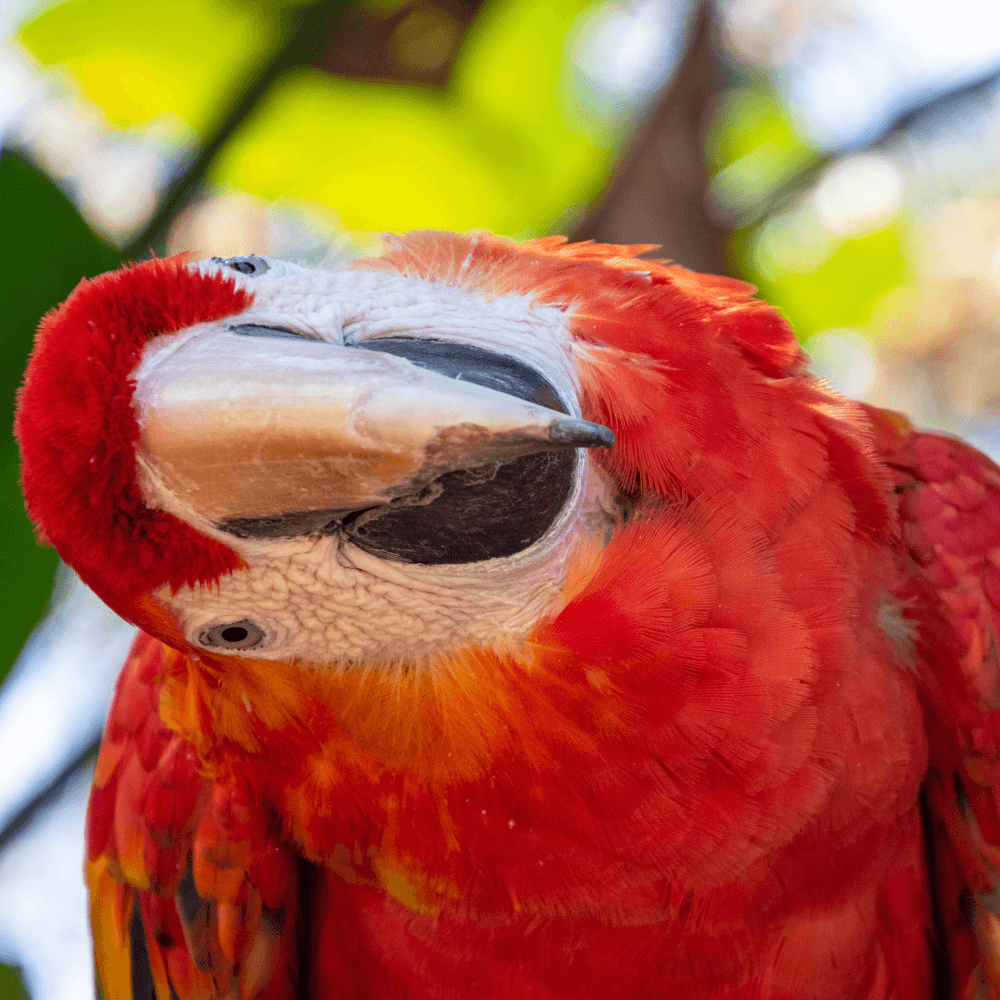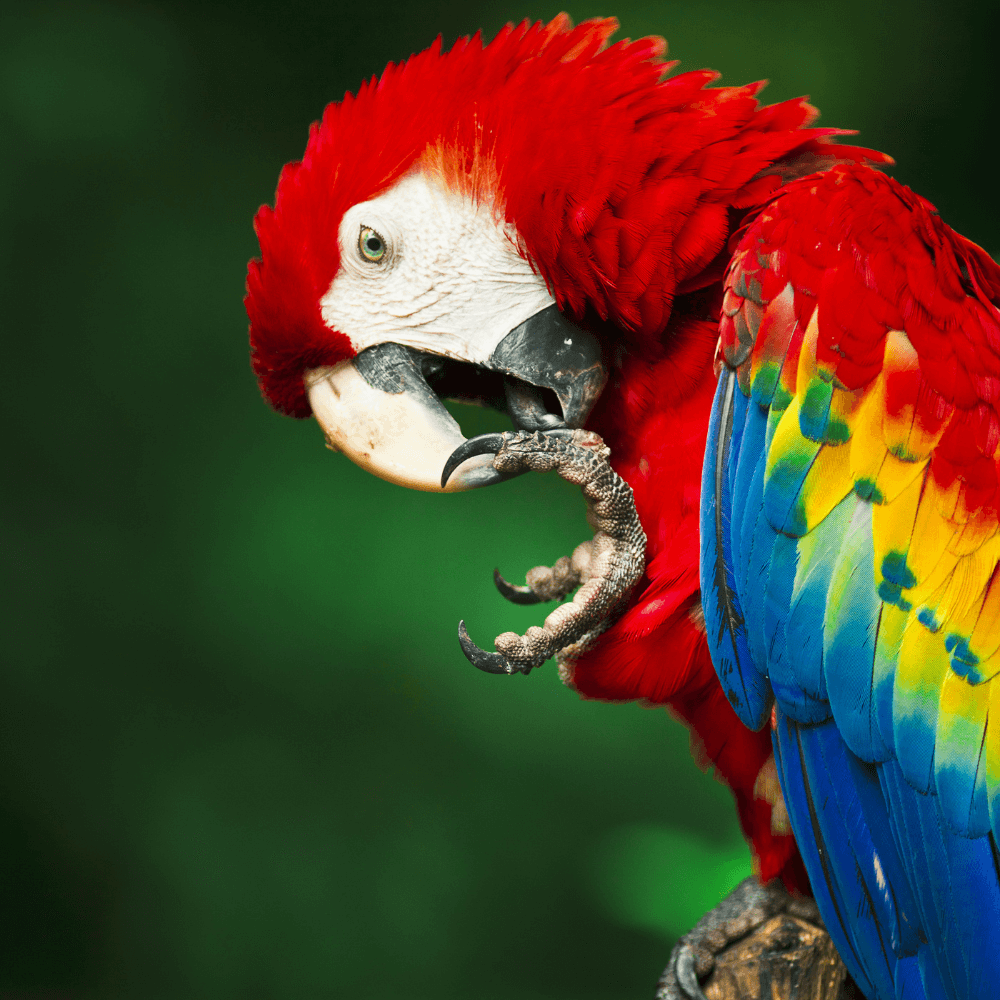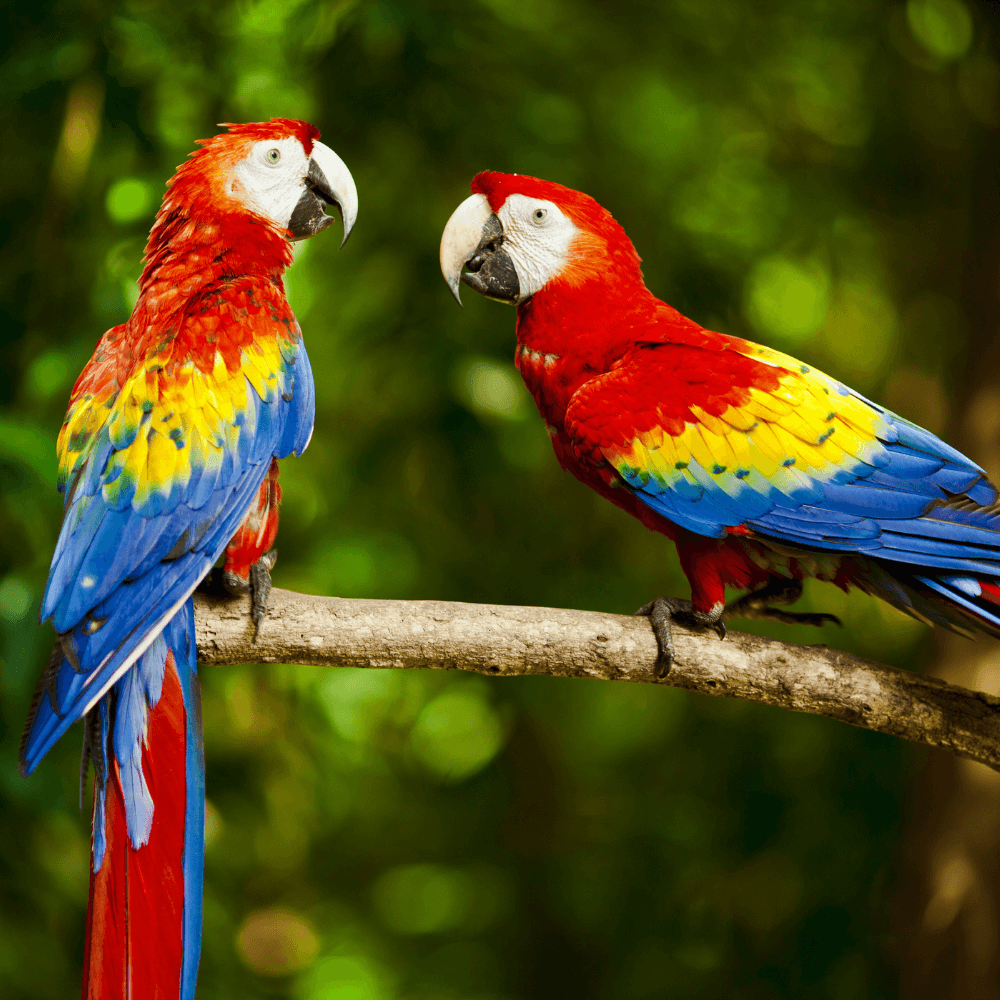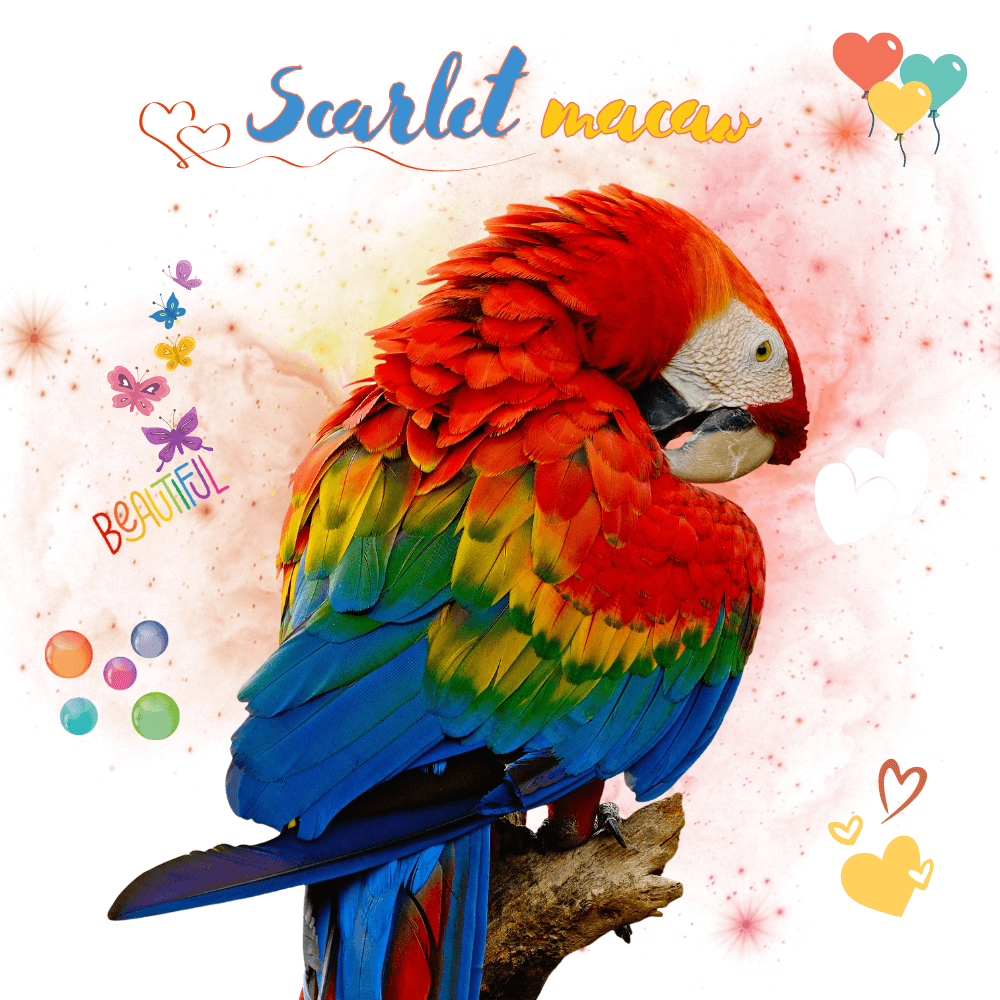The scarlet macaw is one of 17 other parrot species, it is one of the most beautiful and largest species of parrots as well. it has wide, strong wings and hollow bones that help it make its flight, it can reach a speed of 56 km (35 km). miles) per hour.
The most important thing that distinguishes the scarlet macaw from other parrots is its white face and yellow feathers spread on its wings, it is distinguished by its unique shape with its large size and vibrant feathers. Bright red in color, with blue, on the outer feathers and tail feathers.
It is originally found in South America, in the subtropical rainforest and savanna regions of South and Central America, and has existed for hundreds of years, but its numbers have declined severely, due to overfishing, deforestation, the use of crop pesticides.
Scarlet macaw personality

As with all parrots, it is characterized by a large and strong beak. The upper half of its beak is light in color, while the lower part is colored black, a large bear face and a long and pointed tail.
Both males and females are similar in appearance, but they can be distinguished. Through the tail, also the old scarlet macaw can be distinguished from the young parrot by the color of the eyes, so we find that the old parrots have yellow eyes, while the young parrots have dark eyes.
The scarlet macaw grows about 32 inches (81 centimeters) in length, and because of this length it is characterized by a slender tail, the average weight is about one kilogram (2 to 2.5 pounds), its has bare white skin around the eyes.
Scarlet macaw habitat
The scarlet macaw has a wide distribution throughout Central and South America, beginning east of the Andes Mountains, and from Mexico to southern Peru, Bolivia, and Brazil. This parrot inhabits tropical lowland forests and savannah forests, often found in nearby rivers and large trees. Altitudes of up to 1,500 meters in Costa Rica, frequently make their seasonal movements in response to the availability of fruit.
Scarlet macaw behavior

like many pets, this macaw is very popular due to its color and ability to learn some words and phrases, it is known for being very moody and messy as well. It is one of the types of birds that require a great deal of training.
it is usually found in pairs or in small family groups consisting of 3 to 4 individuals, it may also join flocks of up to 30 birds, there are groups that may reach 50 parrots, that are together in tall trees, Or sometimes in the mangroves.
As we mentioned before, the scarlet macaw has large, curved, very strong beaks, which makes it well-equipped to survive in the jungle. they produce very loud sounds, which can reach for miles, these sounds enable them to detect and locate their groups.
The scarlet macaw is one of the most intelligent types of parrots. When it is in captivity, it is able to imitate words and sounds and learn tricks. Because of these enormous capabilities, it is often found in bird shows and pets, as many studies have reported that the scarlet macaw can Distinguish colors and shapes, but with the appropriate trainer. Studies have shown that with appropriate training, some of these birds can perform simple arithmetic problems. You didn’t give him proper attention.
Scarlet macaw food
In the first place, the scarlet macaw is considered to eat nuts, seeds, and fruits, as well as the nectar that comes from flower buds. like many other parrots, is often found on river banks and licks mud, a behavior known as dirt-eating. The soil preserves parrots in general against any toxic compounds present in their diet, it is also eaten as a sodium supplement.
Scarlet macaw mating
The scarlet macaw is usually born between the months of October and April, depending on the location, its nest is a large cavity, high in a tall tree, the female lays between 1 to 4 eggs, and the eggs hatch during the period between 24 to 28 Almost a day, as for the incubation period, it takes five weeks, the young can leave the nest after only three months, it can actually live on its own after a year, its lives for a period of between 20 to 30 years in captivity, and it can live up to Up to 50 years or more in the wild.
Scarlet macaw endangered

There is a lot of evidence that the species of the scarlet macaw is deteriorating throughout its range, as a result of losing its whereabouts and destroying its nesting sites, hunting it to eat its meat or feathers, or picking it up for trade as a pet, there are also predators that threaten its life such as eagles. It is characterized by the so-called hook that snatches and devours any part of the bird, as well as snakes, tigers, and monkeys.
They are considered predators, and although international trade is prohibited by its inclusion in Appendix I of the Convention on International Trade in Endangered Species, illegal trade still exists so far. the laws don’t always apply.
The breed currently numbers no more than 4,000 parrots, thus it is considered a global threat, the scarlet macaw parrot fritters may number less than 1000 within Central America, and researchers believe that without urgent action, it is likely to disappear from Central America in near future.
There are various initiatives in order to preserve macaws and other birds located throughout Costa Rica. The Parrot Protection Association was appointed in 1995 as an organization dedicated to protecting the scarlet macaw, they began to work to preserve it. This work included guarding the nests and installing nest boxes. Artificial, improving their environments, doing a lot of scientific research, and monitoring their numbers, these methods have achieved some success in preserving the scarlet macaw.
Related article:

